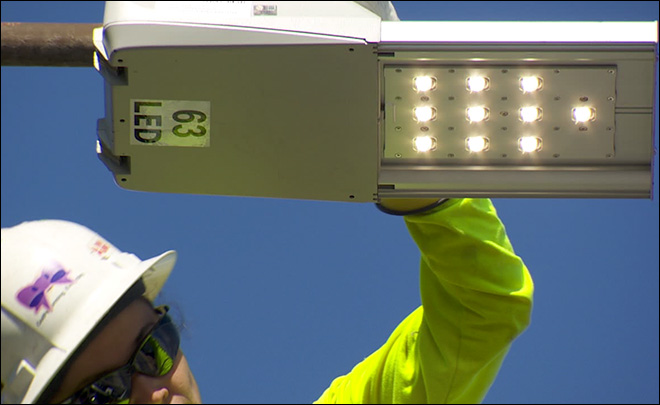More and more cities and taking advantage of the benefits of LED lighting, also known as solid state lighting (SSL). For years, cities have been powered by high-pressure sodium lighting or mercury vapor lamps. Many city streets still are. Unfortunately, high-pressure sodium and mercury vapor lighting does not provide good lighting. What’s more, they are extremely inefficient. Let’s take a look at just a few cities that have taken the step to improve their lighting and energy efficiency through LED streetlight upgrades and what kind of savings have been or will be realized.
Boston
Boston has one of the most successful LED streetlight projects to date, due to how inefficient Boston’s city lights were. Unlike most other cities that were lit mostly by high-pressure sodium (HPS) lamps, much of Boston’s streets were lit with mercury vapor lamps as well as HPS. The project consisted of converting 42,000 mercury vapor and 22,000 HPS lamps. For color reference, mercury vapor is green, HPS is orange, and LEDs are generally selected to be white for streetlights, as they can come in a variety of colors.
The total project cost was $6.8 million dollars. Eversource (then NSTAR) provided a $3.8 million incentive on the project (56%). After the project was completed, the City of Boston was saving $2.8 million annually. Thus, the project had a paypack period of only 1.5 years.
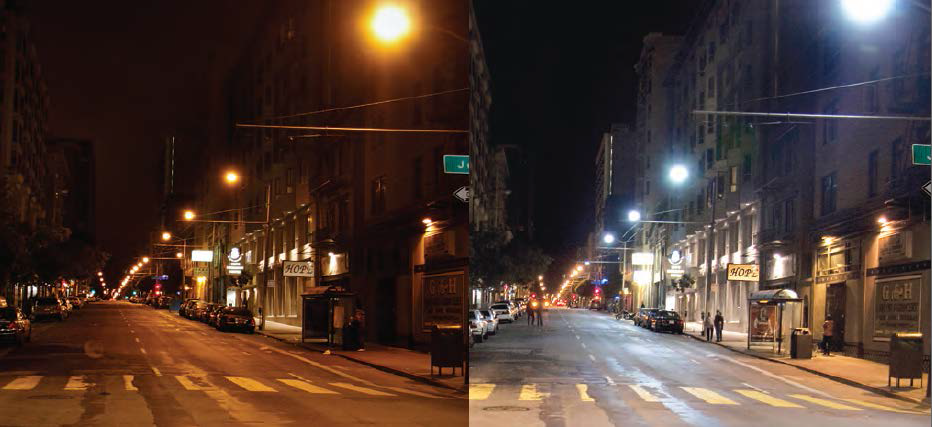
Detroit
One of the biggest projects underway is Detroit’s LED streetlight upgrades. Detroit’s city streets are powered by aging high-pressure sodium lights. Not having seen a major lighting upgrade in decades, most of Detroit’s lights have failed or are failing. According to Public Lighting Authority of Detroit (PLA), “. . . approximately 40 percent of the old streetlights were not in operation due to burned out bulbs, deteriorated infrastructure, or theft of copper.” Dark or poorly lit city streets are major safety concern for both motorists and pedestrians.
According to LEDs Magazine, Detroit has installed more than 48,000 LED streetlights to date, which is two-thirds of the 65,000 solid-state luminaires that are set to be installed by 2016. “The use of LEDs in 65,000 lights compared to high-pressure sodium (HPS) lamps will save $2.4 million annually.”
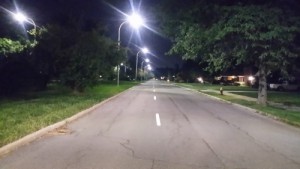
Image source: LEDs Magazine
Portland
In 2014, Portland began a two-year plan to convert 55,000 streetlights to LEDs. As of July 23, 2015, over 20,000 city lights have been replaced and have saved the city over $100,000 per month. Once all lights have been converted, the Portland Bureau of Transportation (PBOT) expects to see $1.5 million in annual savings. “In terms of energy efficiency, the city expects electrical usage to drop by 20 million kilowatt hours every year and eliminate 10,500 tons of climate-changing carbon pollution.”
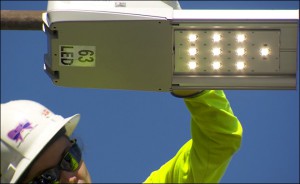
Los Angeles
One of the most famous examples of high-pressure sodium to LED streetlight conversions took place in Los Angeles several years ago. Many of the before and after pictures of the city streets were published in countless media outlets and had gone viral on social media. This project received so much attention due to its sheer size and scope: over 140,000 streetlights were replaced with LEDs over a four-year period.
By the numbers, high-pressure sodium lighting cost the city $16 million annually in electricity costs. After the new LEDs had been installed, the city expected to pay only $7.5 million annually, which equates to 40% in annual savings. Better yet, according to the Los Angeles Bureau of Street Lighting, the project exceeded expectations. “Energy use has been reduced by 63.1 percent and carbon emissions have been reduced by 47,583 metric tons a year.” Maintenance costs dropped significantly, as well. In 2008, over 70,000 streetlights required repair. By 2012, that number fell to 46,300 with expectations that the number would continue to decline.
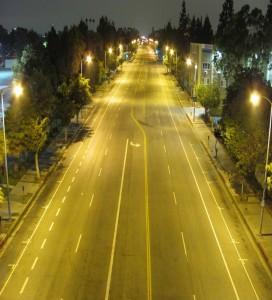
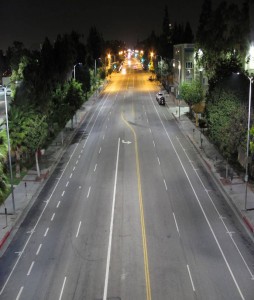
Las Vegas
In Las Vegas, a 2011-2013 project converted 42,000 streetlights to LEDs. Las Vegas has been saving an estimated $2 million in energy and maintenance costs with a return on investment (ROI) of about 7-8 years. Niel Rohleder, assistant traffic manager for the city, noted it took some time before the city decided to move forward with bids on the project. They had looked into an upgrade back in 2006, but the price of LEDs were still too high. Over time, as prices decreased, the concept of the project began to look more and more favorable. After the project’s completion, Niel noted not all of the comments regarding the new lights were well-received. “What we found was that initially after the change was made we’d get some concerns, but then three months later the same exact person might call us and say, ‘Well, you know, I’ve really grown to like this.’”
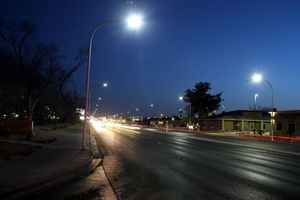
San Francisco
San Francisco has just begun a project to replace 18,500 high-pressure sodium to LED streetlight fixtures. The project has been discussed since 2012 and was tested last year. The project started in August 2015 and construction is estimated to complete by August 2016. Since the project is has just begun, there isn’t any hard data on the energy and dollar savings; however, the city expects its LED lights to consume 50% less energy and be virtually maintenance free for 15-20 years.

Raleigh
LEDs Magazine calls Raleigh the LED city, as it has 30-35 LED projects under its belt, including parks, parking garages, freeway underpasses, pedestrian bridges, and more. Assistant City Manager Daniel Howe says “. . . the city is saving $225,000 per year on its LED projects, $175,000 of which is in energy savings.” Now, the city is about to take on its biggest endeavor yet: a 30,000 high-pressure sodium to LED streetlight conversion project.
The project started on September 29, 2015 and expects to finish in 15 months. The city expects annual savings of $400,000, safer roadways, and longer lighting lifespans.
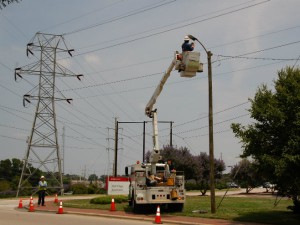
New York City
The conversion of all of New York City’s 250,000 sodium-vapor to LED streetlights began in October 2013 and is estimated to complete by 2017. The New York Times reports the goal of the project is to help reduce the city’s carbon footprint by 30% by 2030. The city expects to save “. . . $6 million in energy costs and $8 million on maintenance because LEDs last up to 20 years, two to four times as long as most sodium-vapor units.”
While the numbers are impressive, not everyone has positive feedback. In the same New York Time’s article, many citizens are complaining about light pollution. People are reporting that the lights are so bright, it is distracting and causing sleeping problems. Jolanta Benal, who lives in Windsor Terrace, Brooklyn, says, “It feels like I’m in a strip mall in outer space.” Another resident, Aida Stoddard, who lives at Fuller Place, says, “We’re all for saving energy, but the city can do so much better.” Some have taken it upon themselves to start a petition on Change.org to require “fully shielded” fixtures that help direct all of the light downward to reduce the glare.
Other residents, however, say LEDs are an improvement. After Central Park got an LED streetlight upgrade in 2012, Tony Ruiz, a Central Park Track Club coach, said, “While they were a bit shocking at first, I immediately got comfortable. It definitely makes the park feel safer at night.”
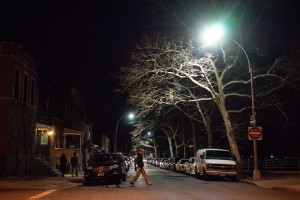
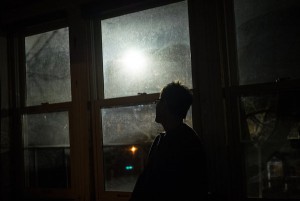
Many other cities and towns have made the all-important switch to LED streetlights. The amount of energy and money they save is critical to a sustainable environment and economy. Yet, concerns about light pollution is still an issue. Clearly, installing the right fixtures within the right environment is important. In Detroit, so many of the fixtures were broken and the city was so dark that the LED streetlights have been applauded as a remarkable improvement. In New York City, light pollution is causing a lot of unrest (literally). New York City residents aren’t the only ones to experience issues with light pollution, but it seems to be hitting NYC especially hard. The next city that moves forward with an LED streetlight project may want to investigate more than just the bottom line and find a solution that saves both energy and protects the interests of its residents.
Featured image source: KATU




